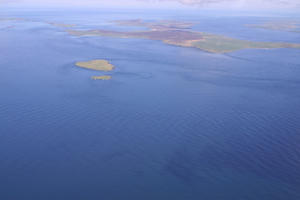By Kalwinder KaurJul 12 2012
UK scientists have deployed a seabed-sonar to study the effect of devices for harnessing marine renewable energies on the marine wildlife and environment. The project, called as Flow and Benthic Ecology 4D (FLOWBEC), is a £1.2 million project for three years, and is being led by the National Oceanography Centre (NOC).
 Aquatera Fall of Warness
Aquatera Fall of Warness
The Department for Environment, Food and Rural Affairs and the Natural Environment Research Council are funding the project. The European Marine Energy Centre in Orkney, the British Oceanographic Data Centre, Marine Scotland Science, Plymouth Marine Laboratory and OpenHydro are collaborating along with scientists from various universities across the UK.
The researchers placed two sonar systems on a seabed frame and placed it near an OpenHydro structure for studying the interaction between the diving seabirds and fish, and the tide and wave energy installation. These sonars enabled imaging of a complete ‘acoustic curtain’ around the turbine and tidal flow. NOC also utilized a marine radar for monitoring the activities of marine mammals and birds, and also for mapping the currents.
The affect of the renewable energy structure on the various species of wildlife and the surrounding environment will be studied. The knowledge acquired is to be offered as an open resource. At the European Conference in Underwater Acoustics in Edinburgh, the early results of the project were presented.
The multidisciplinary study may suggest the methods of avoiding negative effects to the wildlife and the environment due to extraction of wave and tidal energy from the oceans.
Disclaimer: The views expressed here are those of the author expressed in their private capacity and do not necessarily represent the views of AZoM.com Limited T/A AZoNetwork the owner and operator of this website. This disclaimer forms part of the Terms and conditions of use of this website.